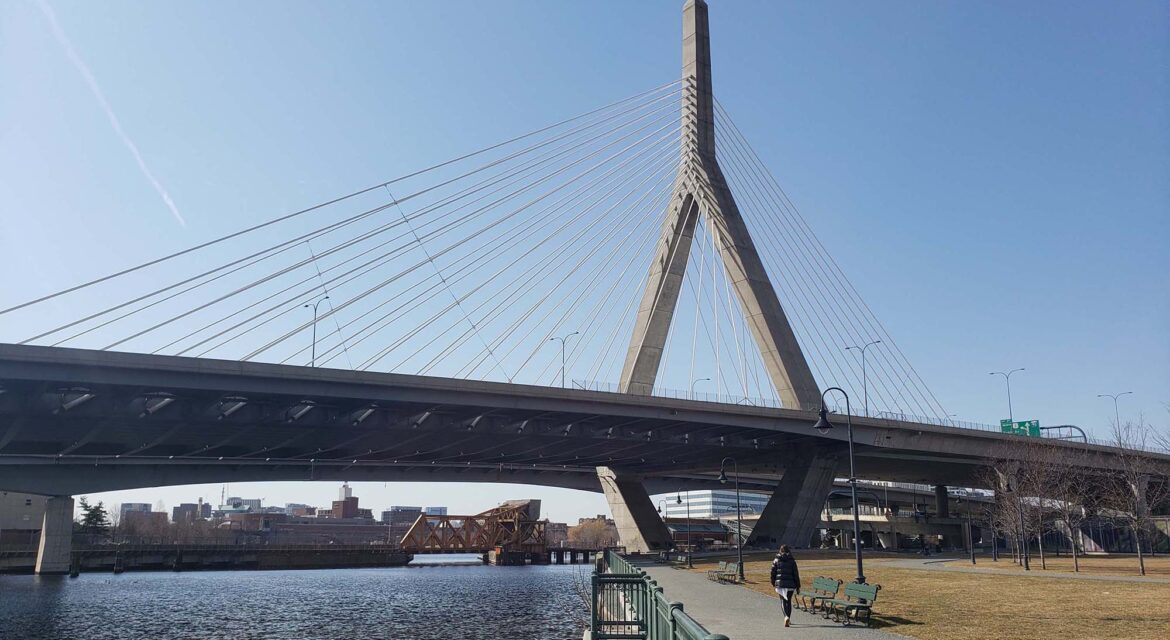 The five-acre Paul Revere Park resides on the Charles River in Boston. Sitting in the shadow of the Leonard P. Zakim Bunker Hill Memorial Bridge, it was the first of the four new parks to be built that are designed to “link the river to the sea“. Completed in 1999, the park is part of an effort to create new green spaces, bikeways and trails throughout Boston.
The five-acre Paul Revere Park resides on the Charles River in Boston. Sitting in the shadow of the Leonard P. Zakim Bunker Hill Memorial Bridge, it was the first of the four new parks to be built that are designed to “link the river to the sea“. Completed in 1999, the park is part of an effort to create new green spaces, bikeways and trails throughout Boston.
The park features a grassy amphitheater with a stage for performances, a children’s play area along with signage and interpretive panels. One of those panels includes excerpts from Paul Revere’s own account of his 1775 ride from Charlestown to Lexington. Numerous paths in the park connect under the Zakim Bridge to other areas and parks in the vicinity.

 The space and paths enable audiences to engage with the area in numerous ways, but the emptiness limits how long they’re able to interact with what’s around them. Additionally, there remains work to be done on the interpretive and programmatic elements that are located throughout Paul Revere Park. Many are lacking or incomplete. That is part of the reason the park suffers from a lack of visibility.
The space and paths enable audiences to engage with the area in numerous ways, but the emptiness limits how long they’re able to interact with what’s around them. Additionally, there remains work to be done on the interpretive and programmatic elements that are located throughout Paul Revere Park. Many are lacking or incomplete. That is part of the reason the park suffers from a lack of visibility.
The potential to create monuments that are directly associated with Paul Revere or the history of the area is evident and the nearby Paul Revere Square showcases what that could look like. Additionally, the proximity of the park to the Freedom Trail has provided stakeholders with an opportunity to directly associate the park with other notable landmarks and attractions.
The serene natural setting combined with the picturesque location underneath the Zakim Bridge as well as the opportunity to utilize history that is associated with Paul Revere and other elements of the Colonial Era highlight how much potential Paul Revere Park has to become a destination for both residents and tourists. The empty spaces throughout the park could be utilized in countless ways, all of which underscore what kind of potential exists to create monuments in the space while also turning the park into a notable destination in Boston.

